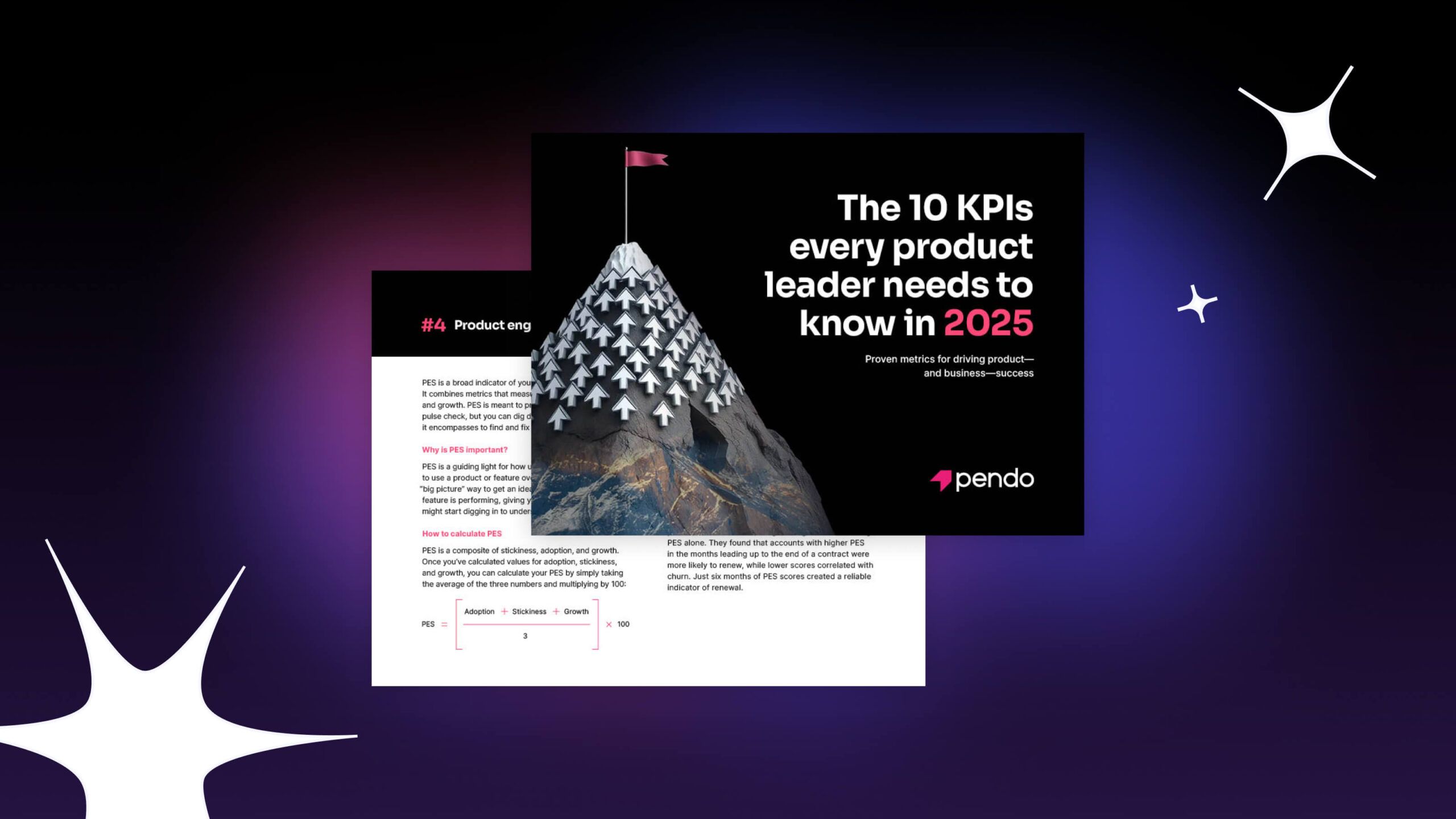How a strong customer engagement strategy can improve the usability of your product
Nailing down the five W’s behind your engagement strategy—who, what, why, where, and when—is critical for effectively communicating with your customers and building a great product experience. That’s why it’s important to plan your engagement strategy before blasting communications out to everyone at once. Asking questions like…
- Who: Which specific users do we need to reach? What problems are they trying to solve?
- What: What key message(s) do they need to hear?
- Why: What are we trying to accomplish with these messages?
- Where: Where do our users spend their time? Which channels will resonate with them?
- When: When will they be most receptive to our messaging?
… can help your team take a more targeted, individualized approach to its engagement strategy—and help ensure your audience feels valued and respected.
Hannah Chaplin (director of product marketing at Pendo) and Esther Edel (product operations analyst at Pendo) recently sat down with Aggregage to talk about why having a plan for communicating with your customers is critical for product-led success, and how meeting your audience where they are can drive a more delightful and engaging mobile experience.
Read on for the key takeaways, or scroll to the bottom of the page to watch the recording of their discussion.
Personalization or bust
As our mobile devices have become intertwined with how we live our lives, we want the digital experiences we have with them to feel individualized—like they were made for us. For the companies creating those experiences, that means being intentional about the words they choose and the engagement tactics they use to make sure every user interaction makes sense and happens at the right time.
A simple yet highly effective way to customize this outreach is to use in-app messaging. In-app messaging is a key communication channel across multi-screen experiences, and can be particularly powerful for mobile use cases. With the right tool, in-app messaging allows you to deliver timely communications to your users without needing to wait for your next app version release or rely on product updates. That way, you can be more agile and address your users’ needs in real-time.
Hannah and Esther covered three key use cases where a strong customer engagement strategy—driven by in-app messaging—can help improve the usability of your product.
Use case 1: Create a beautiful user experience using contextual onboarding
Gone are the days of long-winded training courses. Today, users don’t have the patience for complicated onboarding workflows or lengthy introductions—they want to get into the product and get going, fast. In-app messaging is a seamless way to onboard new users and make them aware of your app’s benefits and main features while keeping them fully immersed in your product experience.
Be sure to keep your onboarding tours simple, targeted, and concise. The goal shouldn’t be to show your users everything they could do with your product, but rather to help them get started with the key functions they need to know to start seeing value. Highlight the most important features or functions of your app, and leverage what you know from usage analytics to create guides that proactively address challenges other users have faced in the past.
Also consider strategically placing contextual onboarding or usage tips throughout your product to guide your users beyond day one—with tooltips, badges, and banners. Create dedicated guidance flows for specific areas of your app that may be less intuitive for new users, and add contextual help buttons (or the ability to relaunch important guidance flows) to keep your users inside your app whenever they need additional support.
Use case 2: Increase your app store rating
For mobile-first companies, app store ratings (on Apple App Store or Google Play) are everything. These ratings show off your product’s best reviews, and allow your app to rank more highly—and therefore be more visible to potential new users—in its respective marketplace.
Asking for ratings in-app is the best way to ensure your users’ responses will be relevant and contextual… but it’s all about timing. Ask for ratings after users have completed a workflow or experienced a moment of delight within your product, not when they’re in the middle of trying to get a task done or have just logged into your app for the first time.
A word of caution: Be smart about whom you ask for an app store rating. You probably don’t want unhappy users giving you a terrible one. So consider excluding them from the pool of users who will see the rating request. However, it’s still important to understand what’s going wrong for unhappy users and to gather their input so you can help them (and make the product better). Consider creating a Voice of the Customer (VoC) program to collect user feedback at scale outside of the app store—and be sure to close the loop!
Use case 3: Deliver NPS and collect user feedback
In-app messaging is also a great vehicle for capturing user sentiment. Fielding net promoter score (NPS) surveys in-app yields higher response rates, and enables you to gather valuable qualitative context that adds color to your respondents’ numerical scores.
Like app store rating requests, it’s a good idea to target and time your NPS surveys to appear in-app at appropriate times—in other words, not when a user is in the middle of an important workflow or immediately after they open your app.
It’s also critical to have a plan for triaging the feedback you get from your NPS survey. Follow up with customers as needed, make changes that align with your product roadmap, and close the loop and express gratitude by communicating back to the customers who shared their thoughts. With the right platform to help automate some of the manual tasks involved in this closed loop process, plus a feedback policy that sets clear expectations about how and when customers will hear from you, keeping your customers informed and engaged is simple.
If you’d like to learn more about how to build a strong customer engagement strategy for your mobile apps, watch the full webinar with Hannah and Esther below—and check out the big book of mobile in-app messaging.
https://pendo-1.wistia.com/medias/s4u7ce4hjy?embedType=iframe&videoWidth=720




